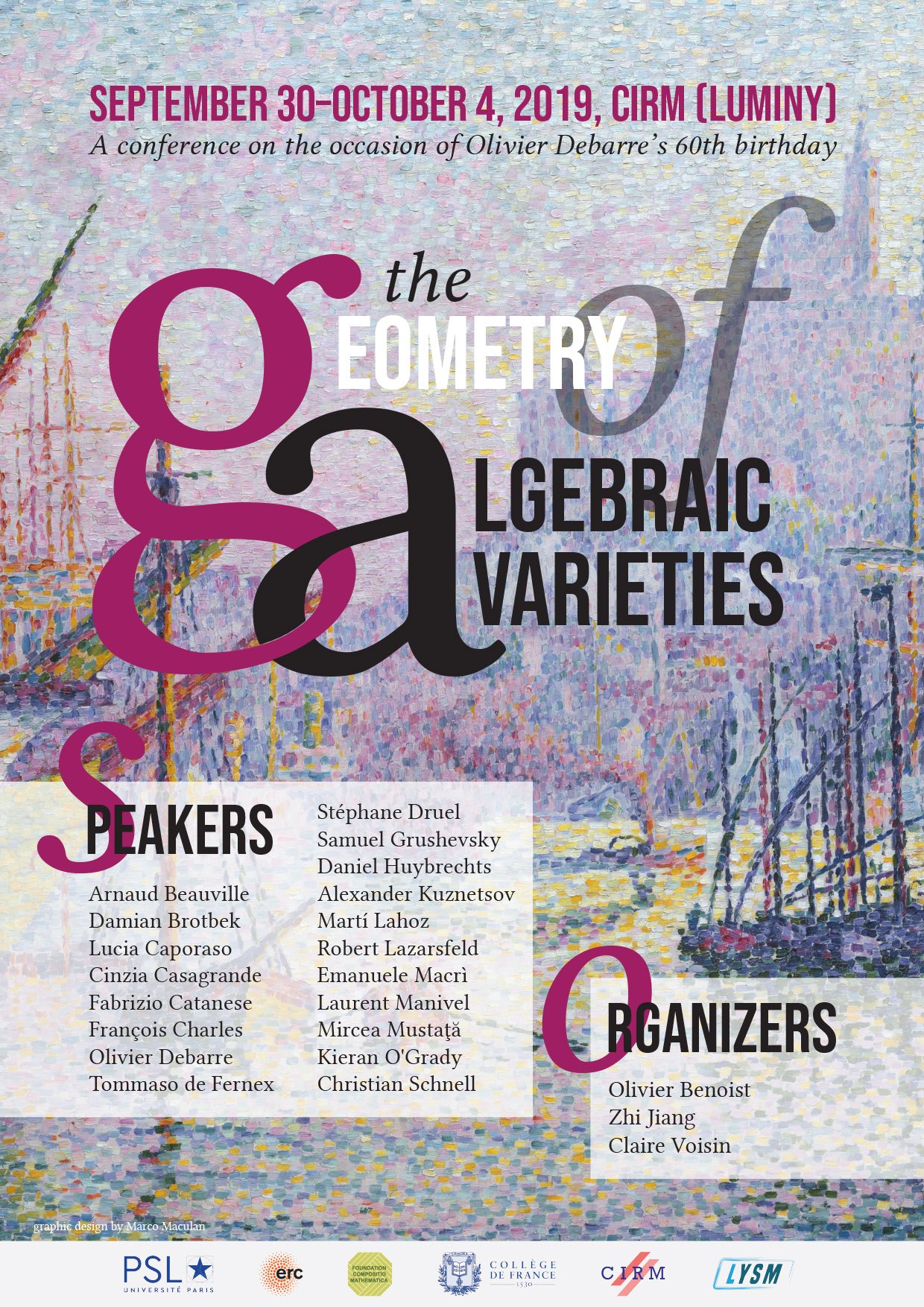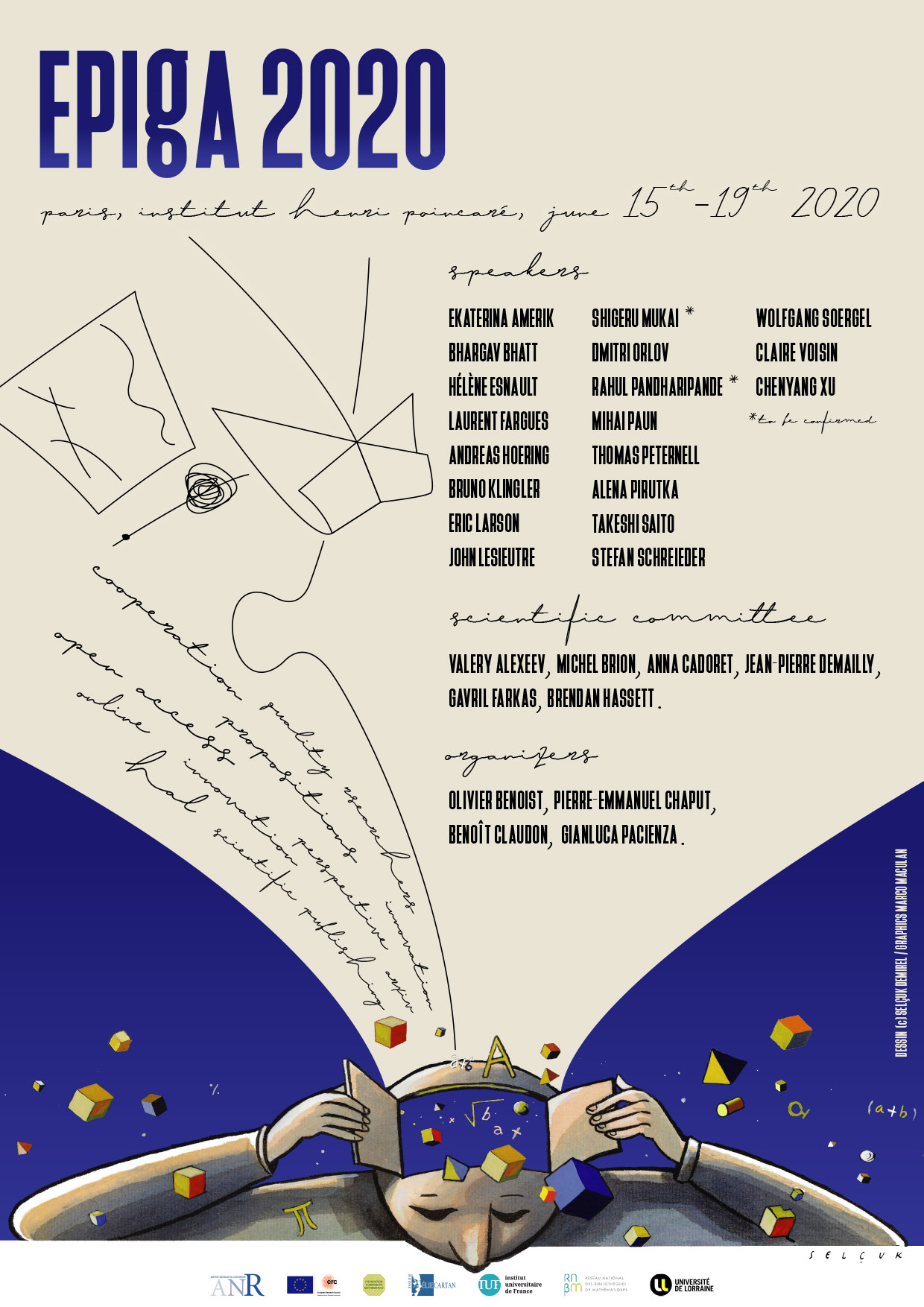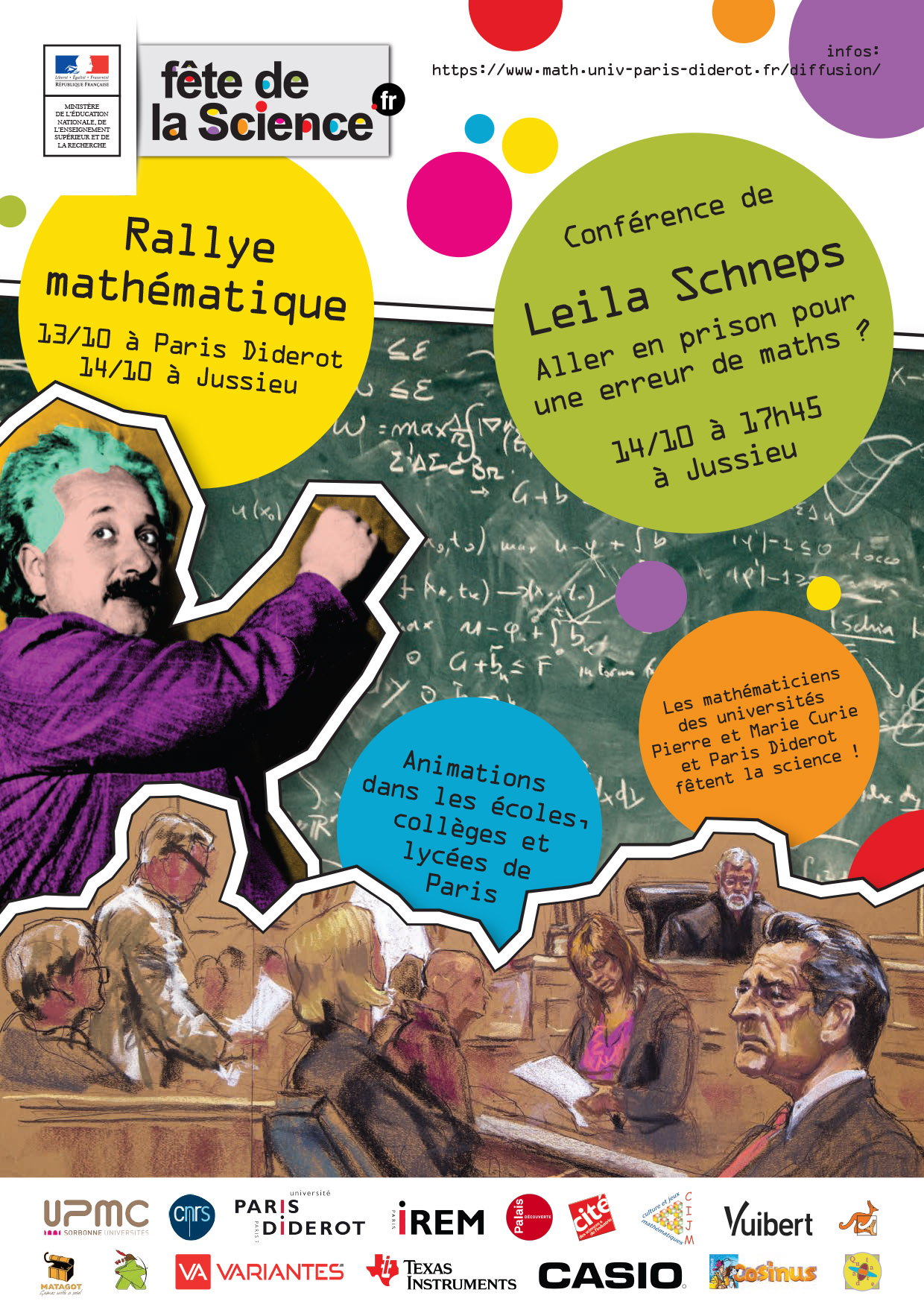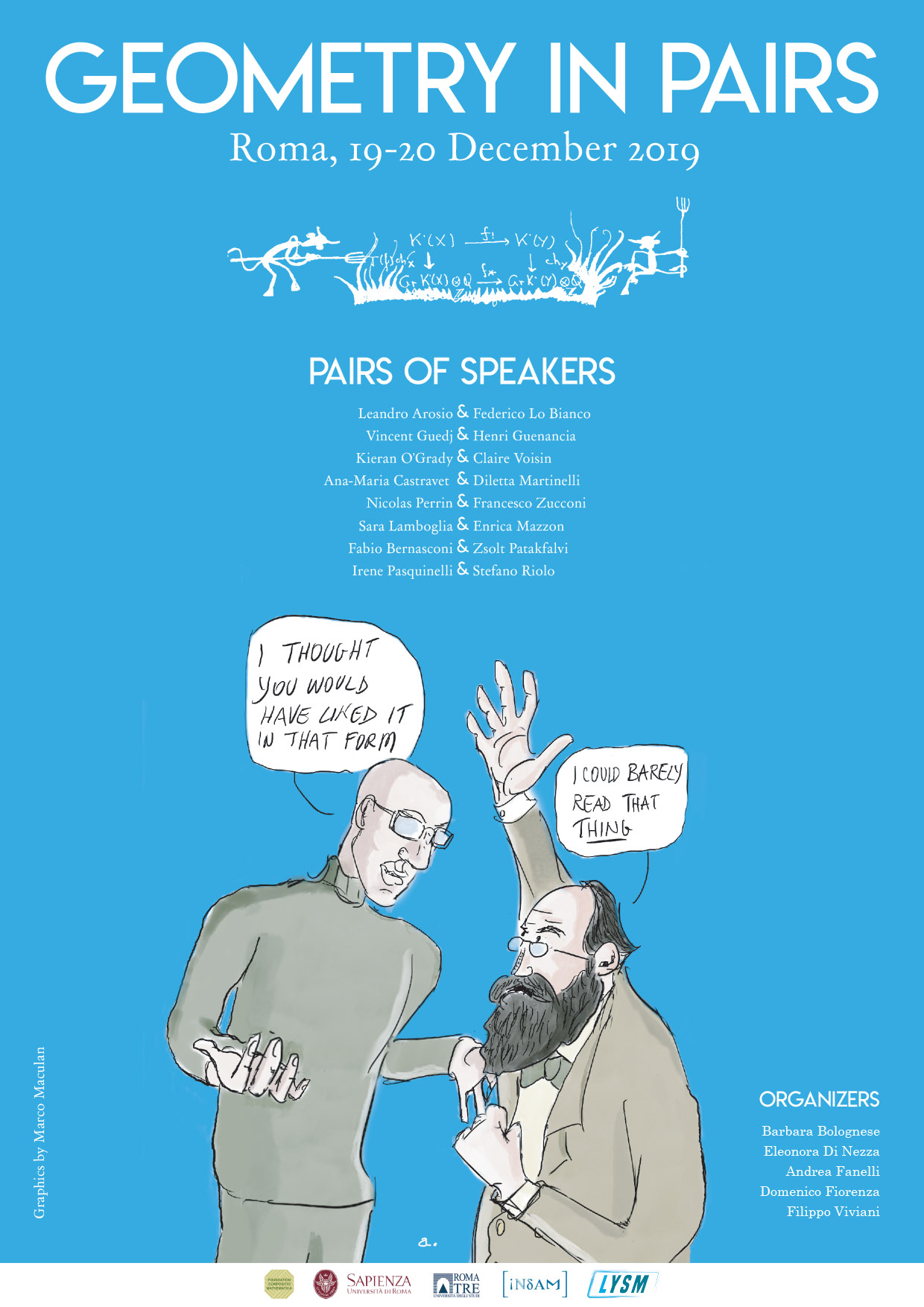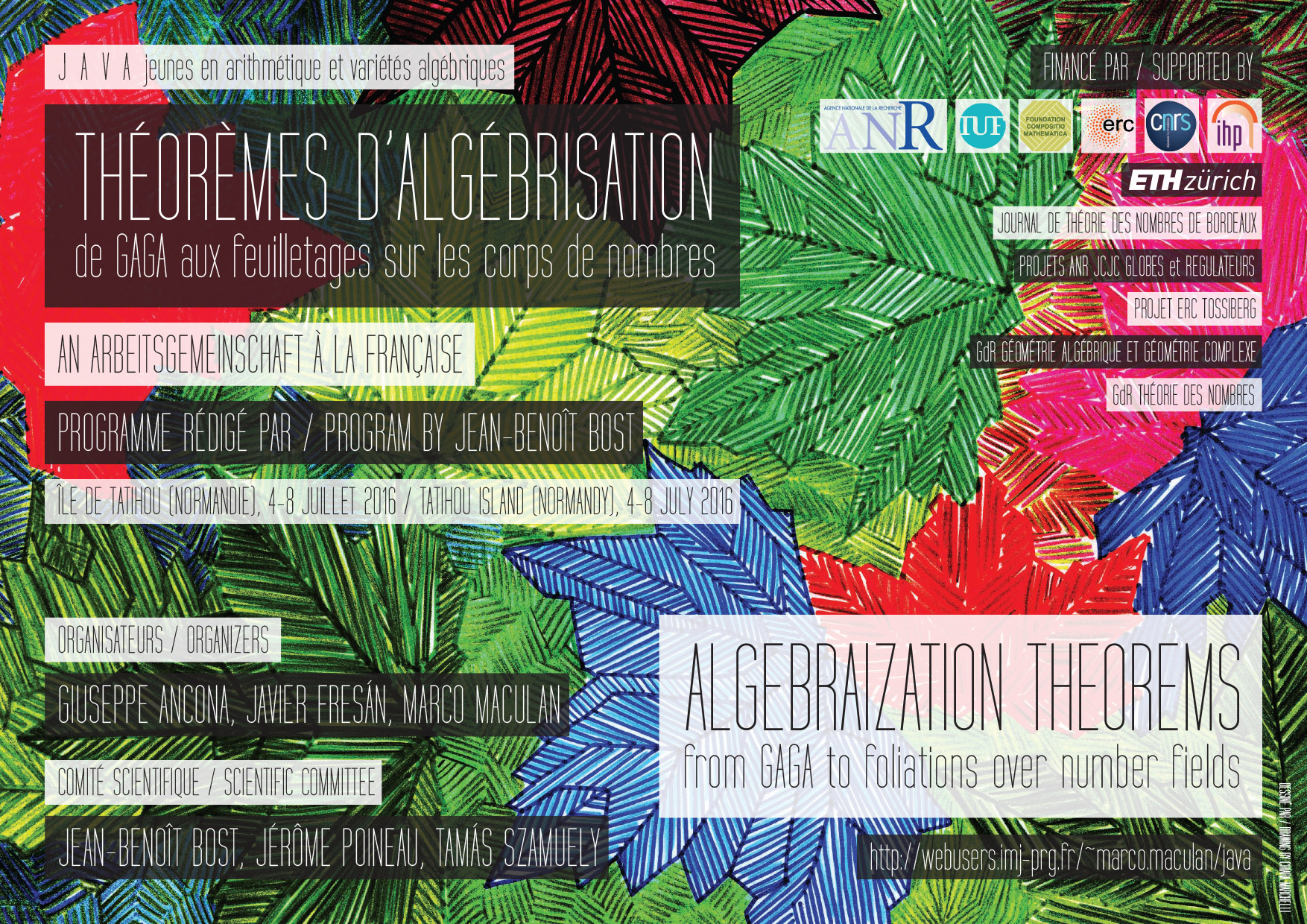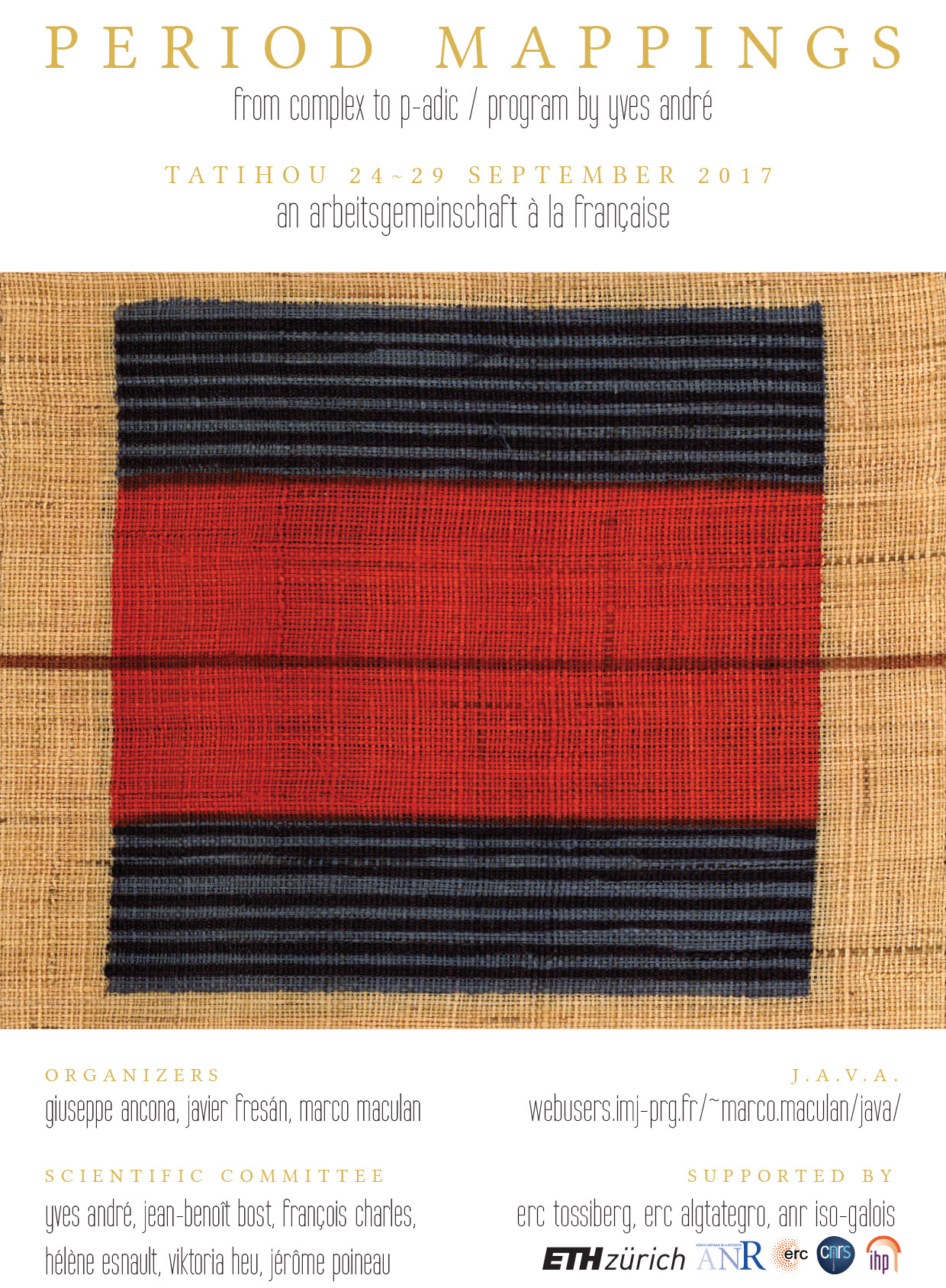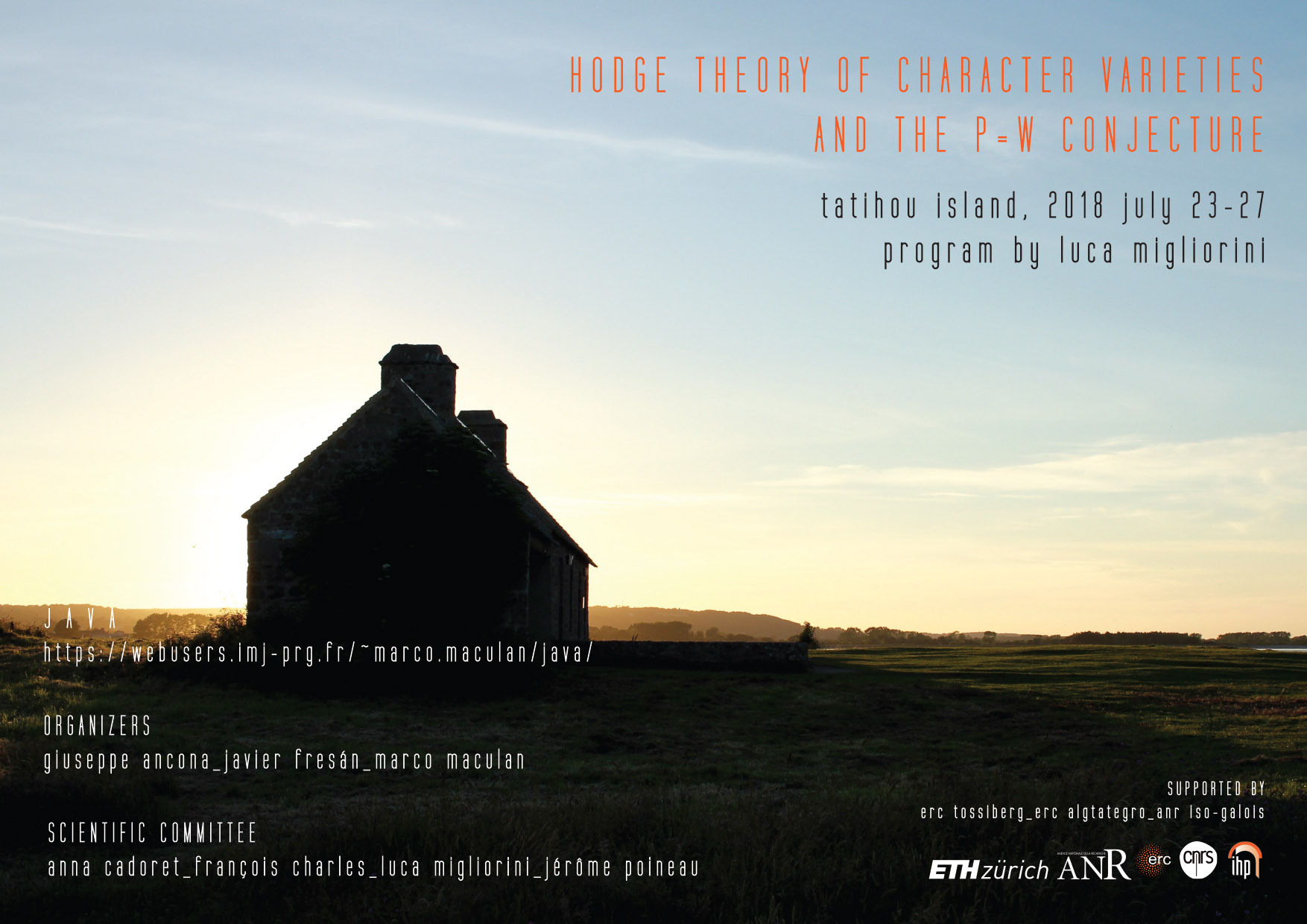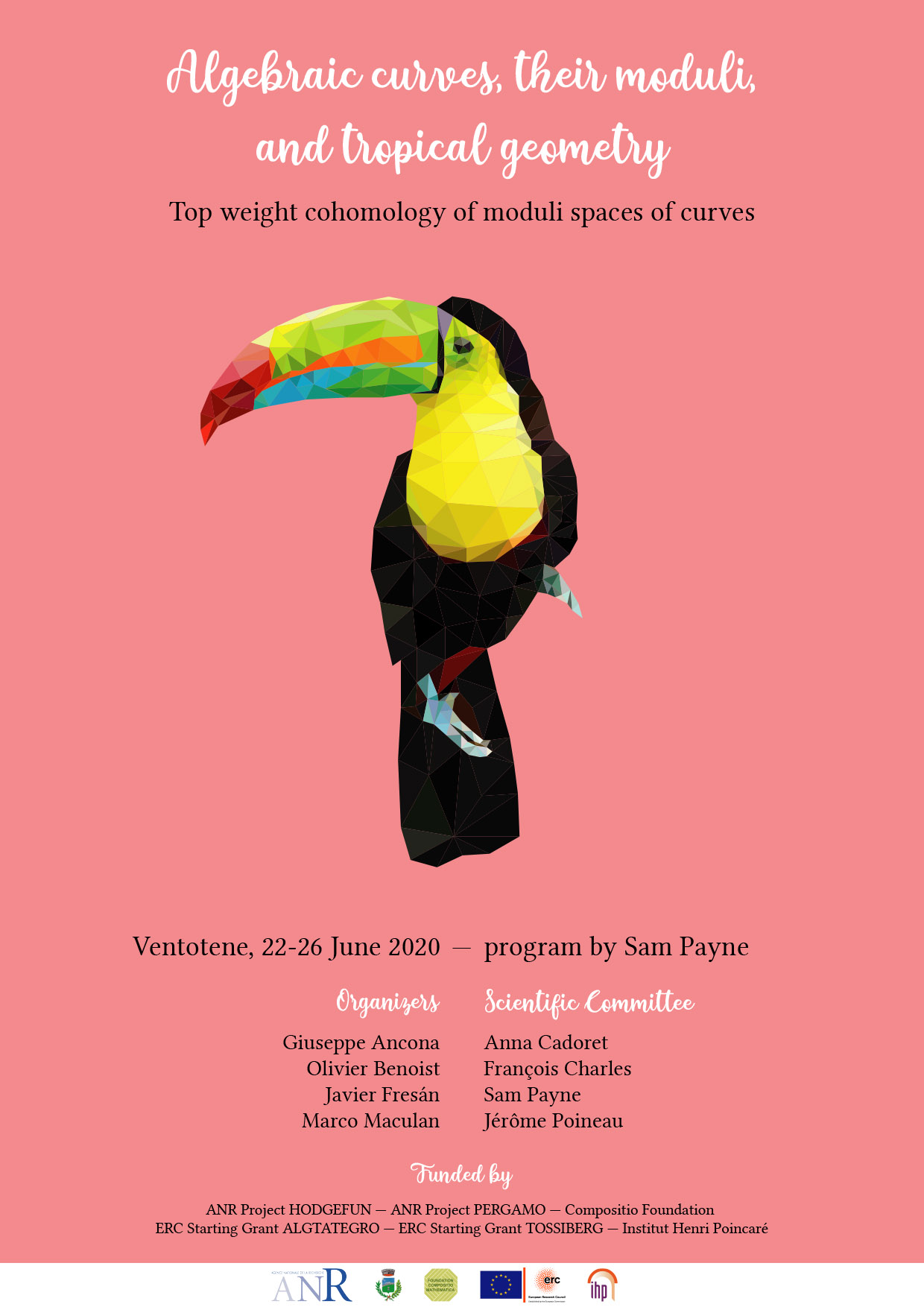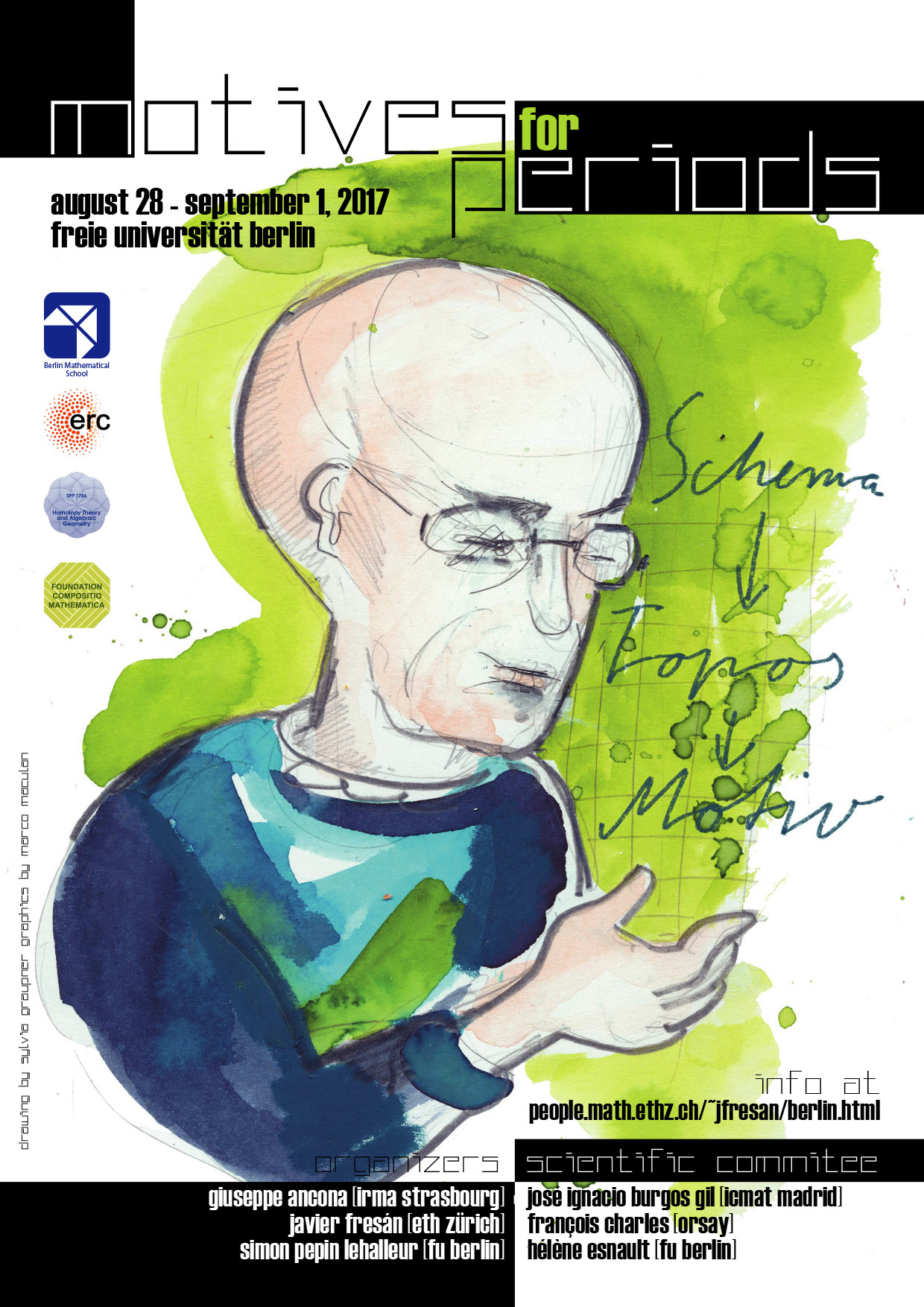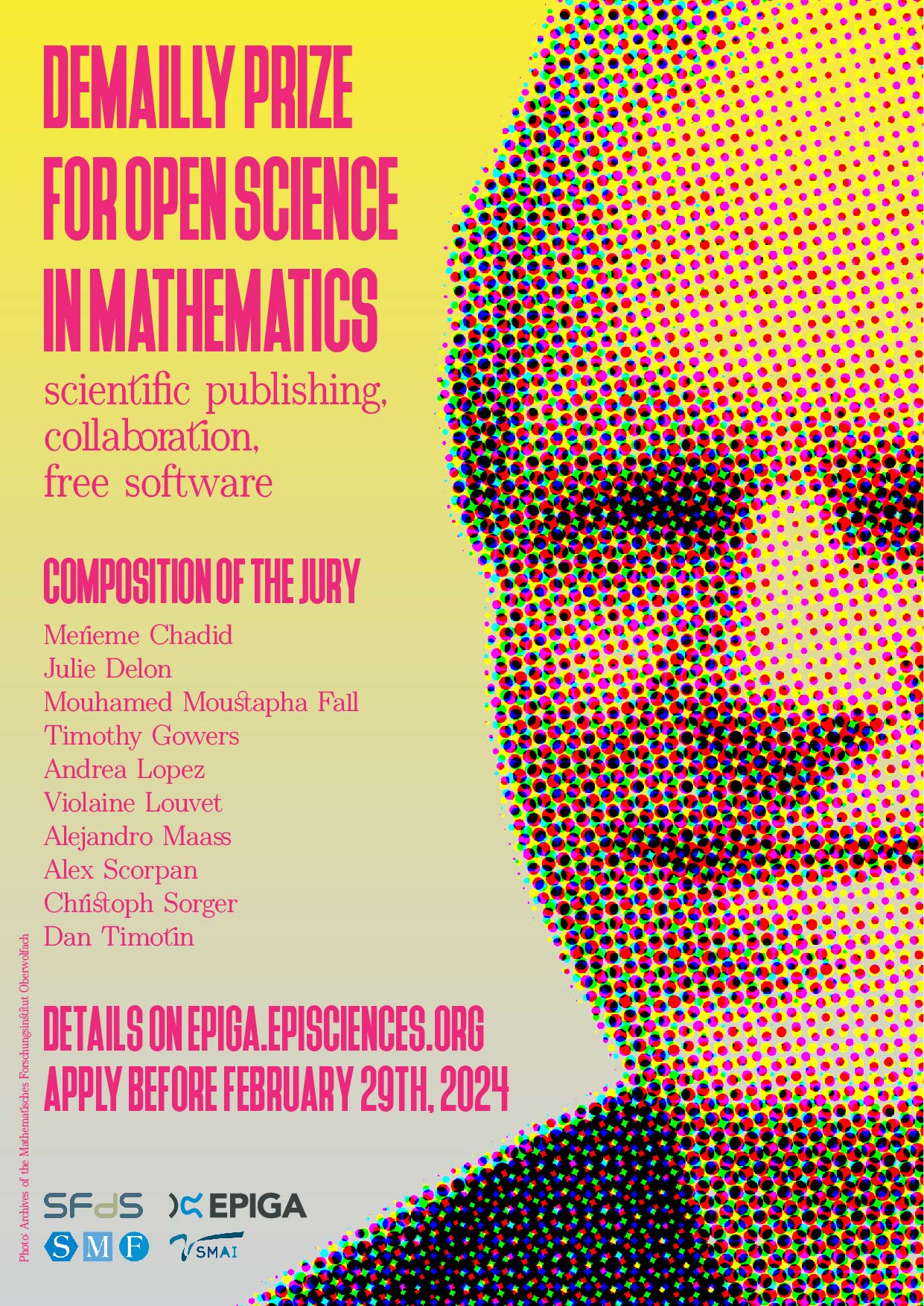Algèbre linéaire et bilinéaire I (2MA221)
Voir aussi la page de
Yves Coudène.
Avancement du cours
Cours 1 (24 septembre)
- Définition d'une matrice (Chapitre 1, 1.1).
- Rang d'une matrice (Chapitre 1, 1.2)
- Définition d'une matrice échelonnée (Chapitre 1, 2.1)
- Propriétés (Chapitre 1, 2.2)
- Mise sous forme échelonnée (Chapitre 1, 3.1)
- Résolution de systèmes linéaires (Chapitre 1, 3.2)
- Interprétation matricielle (Chapitre 1, 3.3)
- Applications (Chapitre 1, 3.4)
Cours 2 (1 octobre)
- Définition d'une forme linéaire (Chapitre 2, 1.1)
- Noyau d'une forme linéaire (Chapitre 2, 1.2)
- Base duale (Chapitre 2, 1.3)
- Le cas de $\mathbb{R}^n$ (Chapitre 2, 1.4)
Cours 3 (8 octobre)
- Définition d'une forme bilinéaire (Chapitre 2, 2.1)
- Représentation matricielle (Chapitre 2, 2.2)
- Changement de base (Chapitre 2, 2.3)
- Rang et noyau (Chapitre 2, 2.4)
- Définition d'une forme quadratique (Chapitre 2, 3.1)
- Signature (Chapitre 2, 3.2)
Cours 4 (15 octobre)
- Réduction des formes quadratiques (Chapitre 3, 3.3)
- Base orthogonale (Chapitre 3, 3.4)
Cours 5 (22 octobre)
- Interprétation matricielle (Chapitre 3, 3.5)
- Étude de la signature (Chapitre 3, 3.6)
- Coniques (Chapitre 3, 4.1)
Cours 6 (29 octobre)
- Quadriques (Chapitre 2, 4.2)
- Définition d'un produit scalaire (Chapitre 3, 1.1)
- Norme euclidienne (Chapitre 3, 1.2)
- Aire, longueur et angle (Chapitre 3, 1.3)
Cours 7 (5 novembre) (notes)
- Aire, longueur et angle (Chapitre 3, 1.3)
- Projection orthogonale (Chapitre 3, 2.1)
Cours 7 (3 décembre) (notes)
- Projection et symétrie orthogonale (Chapitre 3, 2.1)
- Procédé d'orthonormalisation de Gram-Schmidt (Chapitre 3, 2.2)
- Définition d'une isométrie (Chapitre 3, 3.1)
- Groupe orthogonale (Chapitre 3, 3.2)
- Isométries du plan euclidien (Chapitre 3, 3.3)
Cours 9 (10 décembre) (notes)
- Définition du déterminant (Chapitre 4, 1.1)
- Calcul de déterminants (Chapitre 4, 1.2)
- Propriétés des déterminants (Chapitre 4, 1.3)
- Déterminant d'une application linéaire (Chapitre 4, 1.4)
- Somme de sous-espaces vectoriel (Chapitre 4, 2.1)
- Valeurs propres et vecteurs propres (Chapitre 4, 2.2)
Cours 10 (17 décembre) (notes)
- Diagonalisation (2.3)
- Interprétation matricielle (2.4)
- Cas des valeurs propres distinctes (2.5)
- Adjoint d'une application linéaire (3.1)
- Diagonalisation des applications autoadjointes (3.2)
Fondements d'analyse et algèbre (2MA205)
Avancement du cours
Cours 1 (21 septembre)
- Rappels sur les relations: ordre partiel, ordre total, équivalences
- Construction des entiers relatifs, de l'opération de somme, de l'opposé.
Cours 2 (26 septembre)
- Fin de la costruction des entiers: multiplication et ordre
- Construction des nombres rationnels et ses opérations.
Cours 3 (2 octobre)
- Construction des nombres réels.
- Somme, multiplication, division de nombres réels.
- Ordre sur les réels. Valeur absolue.
Cours 4 et 5 (9 et 16 octobre)
- Convergence de suites de Cauchy réelles.
- Propriété de la borne supérieure.
- Représentation en base $N$ d'un nombre réel..
Cours 6 (23 octobre)
- Cardinalité. Exemples: $\mathbb{N}$, $\mathbb{Z}$, $\mathbb{Q}$.
- Théorème de Cantor-Schröder-Bernstein.
- Cardinalité de l'ensemble des parties.
- Cardinalité de $\mathbb{R}$.
Cours 7 (30 octobre)
- Nombres irrationnels, algébriques, transcendants.
- Division euclidienne des polynômes.
- Idéaux dans l'anneaux des polynômes.
- Nombre de racines d'un polynôme.
- Cardinalité des algébriques et des transcendents.
Cours 8 (6 novembre) (notes)
- Théorème de Liouville.
- Nombres de Liouville.
Cours 9 (23 novembre) (notes)
- Anneau, idéaux, anneaux intègres, corps. Exemples.
- Anneau quotient.
- Idéaux premiers.
- Polynômes irréductibles et premiers. Factorisation unique.
- Extension de corps reletive à un polynôme irréductible.
Projets pour le cours (notes)
- Transcendence de $e$ et de $\pi$. (Bouzar-Sun)
- Théorème de Lindemann-Weierstrass.
- Le théorème d'Apéry : irrationalité de $\zeta(3)$ (Acard-Bouallouche)
- Les nombres $p$-adiques : construction et méthodes de Newton. (Hadj Slimane-Bessonneau)
- Entiers de Gauss. (Mansour Bourassine-Kurdyk)
- Réciprocité quadratique
- Nombre de polynômes irréductibles sur un corps fini. (Madi-Saïd-Otmane)
- La fonction $\zeta$ de Riemann et ses valeurs aux entiers pairs. (Moreau-Venedittan)
- Polynômes cyclotomiques et construction de polygônes réguliers à la règle et au compas. (Blasco-Braun)
- Équation de Pell-Fermat (Devinat-Saci)
Elliptic curves
Lecture 1 (November 3rd) (notes)
- Elliptic functions ([Silverman, Chapter VI, §2 and §3 up to Theorem 3.5])
| Weierstrass' $\wp$ and $\wp'$. |
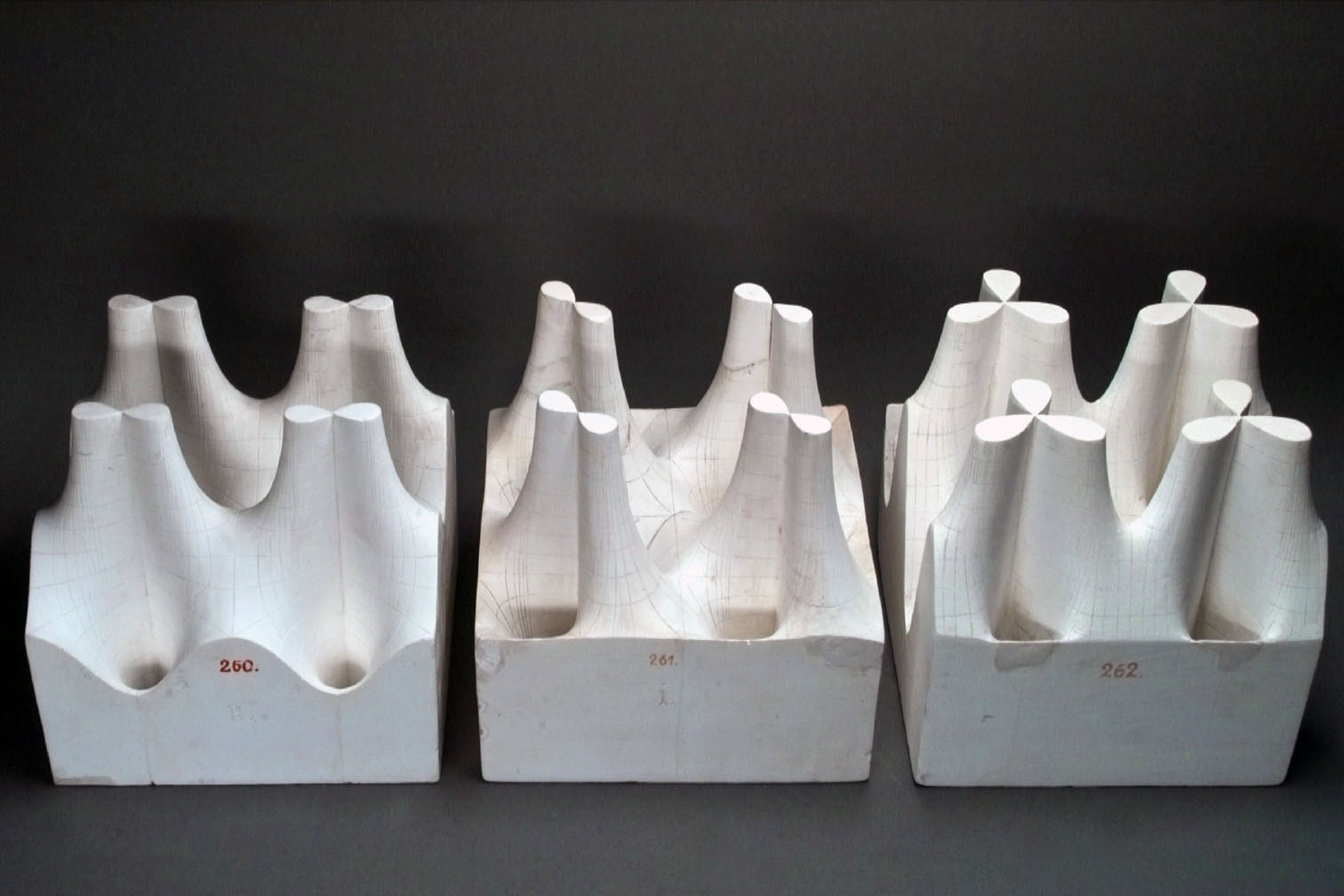 |
Lecture 2 (November 4th) (notes)
- Proof of the embedding Theorem for complex elliptic curves. ([Silverman, Chapter VI, Theorem 3.5])
- Interpretation of the embedding via Riemann-Roch ([Reyssat, Chapter X, § 1])
- Group morphisms between elliptic curves ([Silverman, Chapter VI, § 4])
- The set of equivalences classes of elliptic curves ([Serre, Chapter VII, § 2.2])
- Action of $\textrm{SL}_2(\mathbb{Z})$ on the upper half plane ([Serre, Chapter VII, § 1])
| The action of $z \mapsto z+1$ |
The action of $z \mapsto -1/z$ |
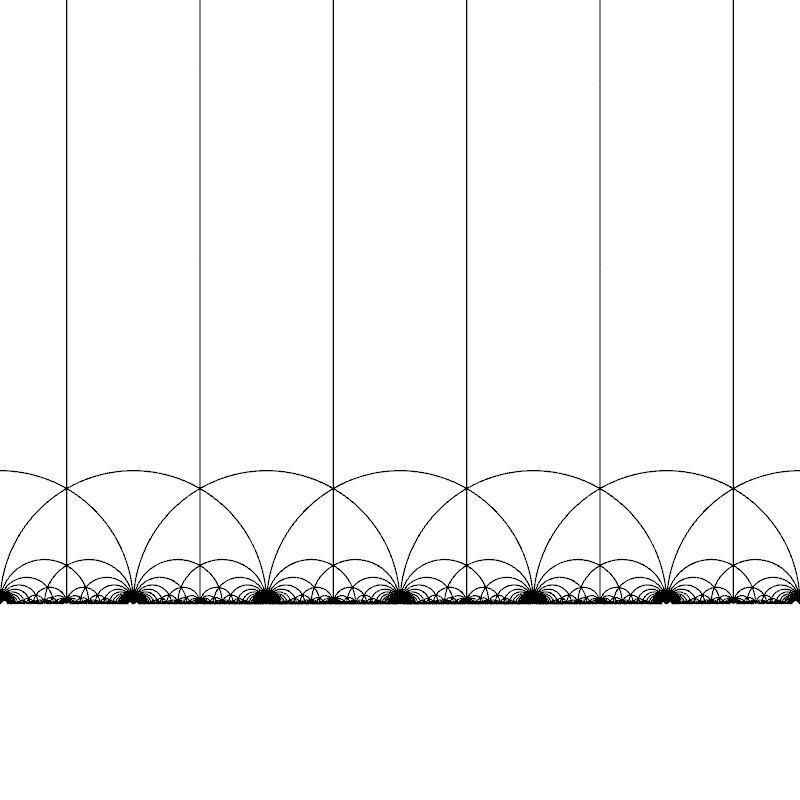 |
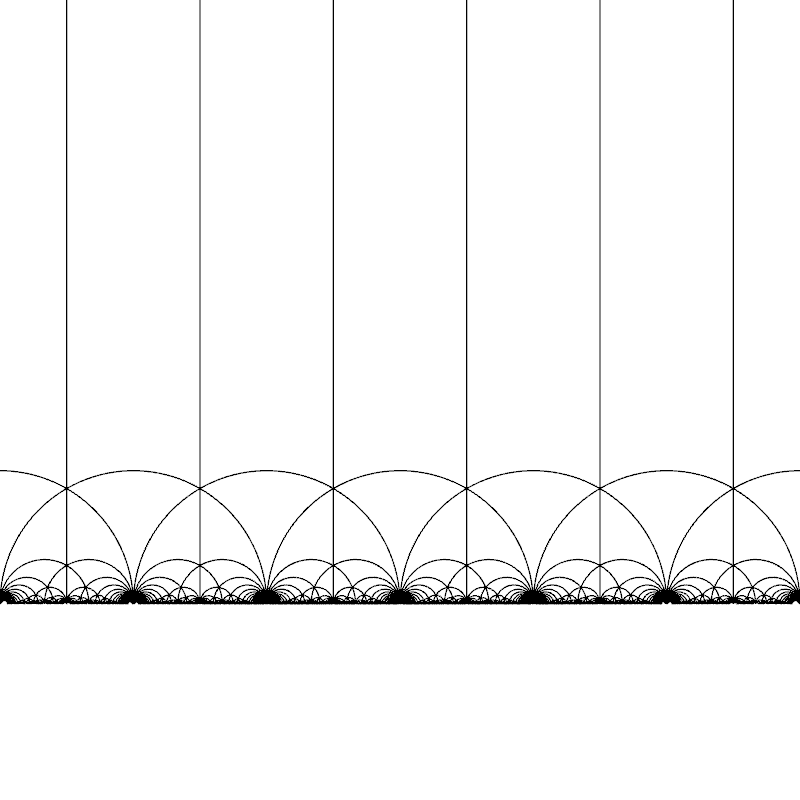 |
Lecture 3 (November 6th) (notes)
- The Eisenstein series are modular forms of weight $2k$ ([Serre, Chapter VII, § 2.3]).
- The $j$-invariant of an elliptic curve ([Serre, Chapter VII, § 3.3]).
- Formula for the order of vanishing of a modular form of weight $2k$. ([Serre, Chapter VII, Theorem 3])
- The $j$-invariant is a bijection $\mathbb{H}/\textrm{SL}_2(\mathbb{Z}) \stackrel{\sim}{\rightarrow} \mathbb{C}$ ([Serre, Chapter VII, § 3.3])
- Torsion group of a complex elliptic curve ([Lang, Chapter 2, § 1], [Silverman, Chapter VI, Proposition 5.4])
- Summation formula for $\wp$ ([Lang, Chapter 1, § 3])
- Endomorphisms and automorphisms of a complex elliptic curve. ([Silverman, Chapter VI, Theorem 5.5])
Lecture 4 (November 10th) (notes)
- Normal, regular, discrete valuation, Dedekind rings. ([Dat, p. 10-12]; Stacks)
- Definition of an algebraic variety.
Lecture 5 (November 11th) (notes)
- Algebraic curve associated with a field of transcendance degree 1. ([Dat, p. 13-14])
Lecture 6 (November 13th): "Exercises" (notes)
- Artinian rings (Stacks)
- Degree formula for maps between algebraic curves
Lecture 7 (November 17th) (notes)
- Morphisms between smooth projective curves. ([Dat, p. 13-16])
- Divisors. ([Dat, p. 16-18])
Lecture 8 (November 18th) (notes)
- Kähler differential forms. ([Dat, § 2.3.2], [Liu, § 6.1.1])
Lecture 9 (November 20th) (notes)
- Divisor of a meromorphic differential form, Hurwitz formula. ([Dat, -. 21-22])
- Riemann-Roch (without proof). ([Dat, § 2.3.4])
- Embeddings associated with a divisor. ([Dat, § 2.2.3 and 2.3.5])
Lecture 10 (November 24th) (notes)
- Proof of the embedding theorem. ([Dat, § 2.2.3 and 2.3.5])
- Embedding of an elliptic curve. Weierstrass equation. ([Dat, Théorème 3.1.3 (i)])
- Smooth projective plane curves
Lecture 11 (November 25th) (notes)
- Genus of a smooth plane cubic.
- Group law on a smooth plane cubic.
- 2-torsion points (in characteristic different from 2)
- Isomorphism $E(k) \rightarrow \mathrm{Pic}^0(E)$
Lecture 12 (December 1st) (notes)
- Group law is an algebraic map. ([Dat, § 3.1.4])
- Frobenius twists and inseparable morphisms. ([Dat, § 2.4.3])
- Isogenies. ([Dat, § 3.2.1])
- Multiplication by $m$. ([Dat, § 3.2.2])
- Invariant differentials. ([Dat, § 3.3])
Lecture 13 (December 2st) (notes)
- Proof of [Dat, Theorem 3.3.1]
- Quotient by a finite subgroup. ([Dat, Lemma p. 35])
- Dual isogenies. ([Dat, § 3.2.3])
- Definition of Weil's pairing. ([Dat, § 3.4.1])
Lecture 14 (December 4th) (notes)
- 2-torsion points in characteristic 2.
- Frobenius.
- Automorphisms.
Lecture 15 (December 8th) (notes)
- End of proof of [Dat, Proposition 3.4.2]
- An isogeny and its dual are adjoint with respect to Weil's pairing. ([Dat, Proposition 3.4.3])
- The dual of the sum is the sum of the duals. ([Dat, Theorem 3.2.4])
- $\mathrm{deg}([m]) = m^2$, at long last! ([Dat, Corollary 3.2.5])
- The degree is a positive definite quadratic form. ([Dat, Corollary 3.2.6])
- Hasse's bound of $\mathbb{F}_q$-rational points. ([Dat, Theorem 3.2.7])
- Tate module. ([Dat, § 3.5.1-2])
Lecture 16 (December 9th) (notes)
- End of proof of [Dat, Theorem 3.5.3]
- Endomorphism ring. ([Dat, § 3.6.1, 3.6.2, Lemma and Proposition p. 52])
- Weierstrass equation (reprise). ([Dat, § 3.7.1])
- Group law on singular cubics.([Dat, § 3.7.3])
- Over non-Archimedean fields (only statements). ([Dat, § 3.8.1, 3.8.3])
- Statement of Mordell's Theorem. ([Dat, § 3.9])
Lecture 17 (December 11th) (notes)
- Characterization of supsersingular curves.
- Examples of supersingular curves.
- The $j$-invariant.
Lecture 18 (December 15th) (notes)
- Counting of supsersingular curves.
- Singular Weierstrass equation.
References
- J.-F. Dat, Introduction à l'arithmétique des courbes elliptiques
- N. Bergeron, A. Guilloux, Introduction aux surfaces de Riemann
- O. Forster, Lectures on Riemann surfaces
- J. Milne, Modular Functions and Modular Forms
- J. H. Silverman, The Arithmetic of Elliptic Curves
- E. Reyssat, Quelques aspects des Surfaces de Riemann (pdf here)
- J.-P. Serre, Cours d'arithmètique (also translated in english, A course in Arithmetic)
- S. Lang, Elliptic Functions
- Q. Liu, Algebraic Geometry and Arithmetic Curves
Some exercises and complements (in French)
- Bezout's Theorem (pdf and source of the exercises)
- Inflexion points (in arbitrary characteristics) and group law. (pdf and source of the exercises)
- Embeddings via Riemann-Roch. (pdf)

